Iceland’s unique position astride the Mid-Atlantic Ridge has blessed this Nordic island nation with an extraordinary geothermal bounty. Volcanic activity heats massive underground water reserves, creating everything from subtle warm streams to vigorously boiling mud pots across the Icelandic landscape.
For centuries, Icelanders have harnessed these natural hot springs for bathing, cooking, heating, and social gathering—developing a distinct bathing culture that remains central to national identity. Today, visitors can experience these thermal treasures in settings ranging from sophisticated spa complexes to completely undeveloped wilderness pools. For travelers planning an Iceland itinerary centered around hot water experiences, the options extend far beyond the famous Blue Lagoon.
Here is a list of 15 exceptional geothermal destinations across Iceland that showcase the remarkable diversity of the country’s hot spring culture.
The Blue Lagoon
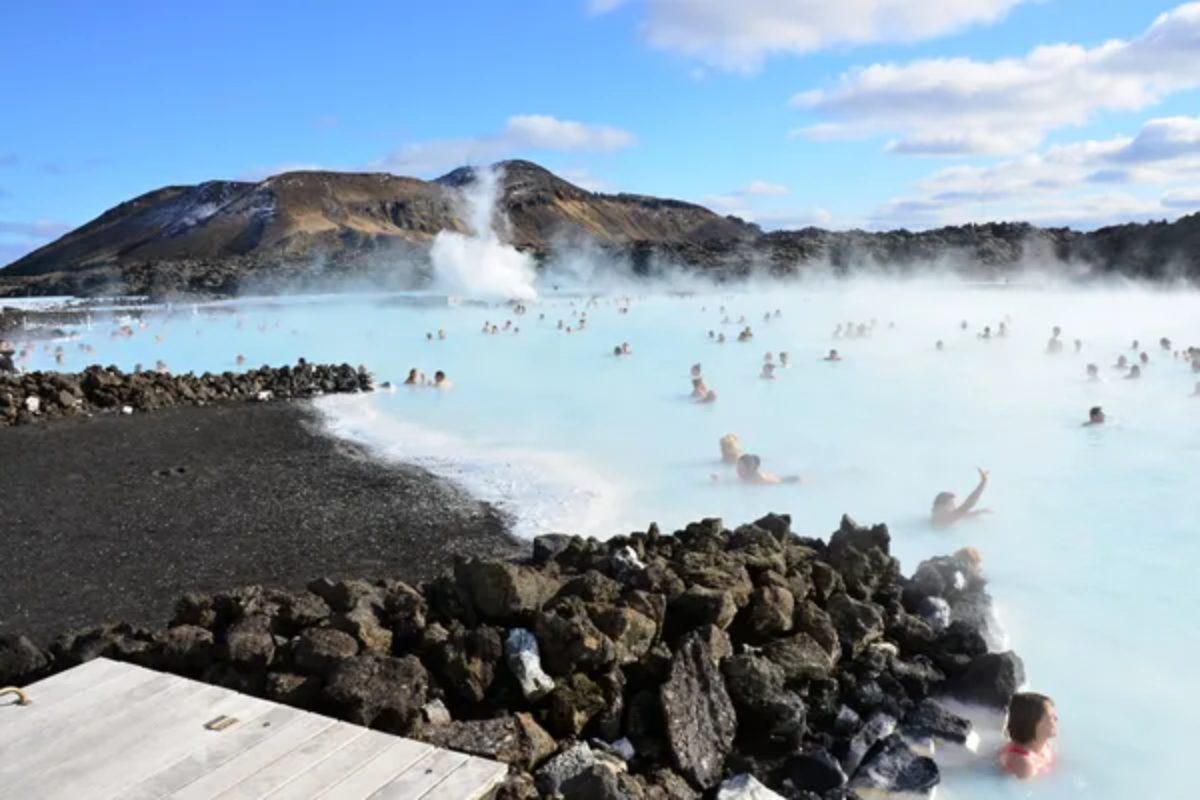
No discussion of Icelandic hot springs can begin elsewhere than this internationally famous thermal spa located on the Reykjanes Peninsula. What many visitors don’t realize is that the Blue Lagoon isn’t actually a natural formation but rather a happy accident—the mineral-rich water comes from the adjacent geothermal power plant’s runoff, which proved to have remarkable skin-healing properties.
The complex has expanded dramatically over decades, now featuring luxury changing facilities, in-water bars, and exclusive retreat areas for premium ticket holders. Despite its commercial development and higher prices, the ethereal milky-blue water set against black lava fields creates an undeniably magical experience worth experiencing at least once.
Reykjadalur Steam Valley
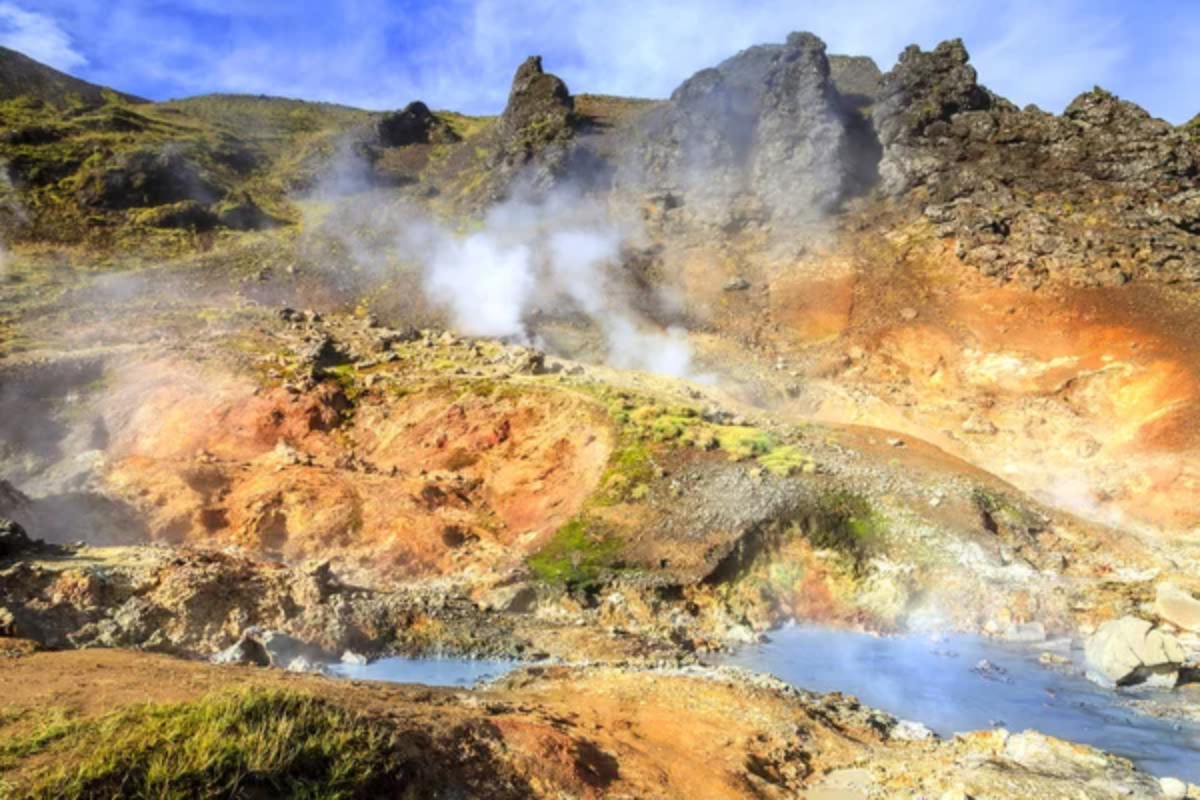
Just 45 minutes from Reykjavík, this geothermal river valley offers one of Iceland’s most accessible natural hot spring experiences. A well-maintained hiking trail leads from the parking area through a landscape punctuated by steaming vents and bubbling mud pots before reaching the bathing area—where a mountain stream mixes with scalding geothermal water to create the perfect temperature gradient.
Simple wooden platforms and changing screens provide minimal infrastructure, while the 3-mile round-trip hike helps limit overcrowding even during peak summer months. The valley’s open setting means bathers enjoy panoramic views of surrounding mountains while sheep often graze nearby, creating quintessentially Icelandic bathing scenes.
Like Travel Pug’s content? Follow us on MSN.
Mývatn Nature Baths
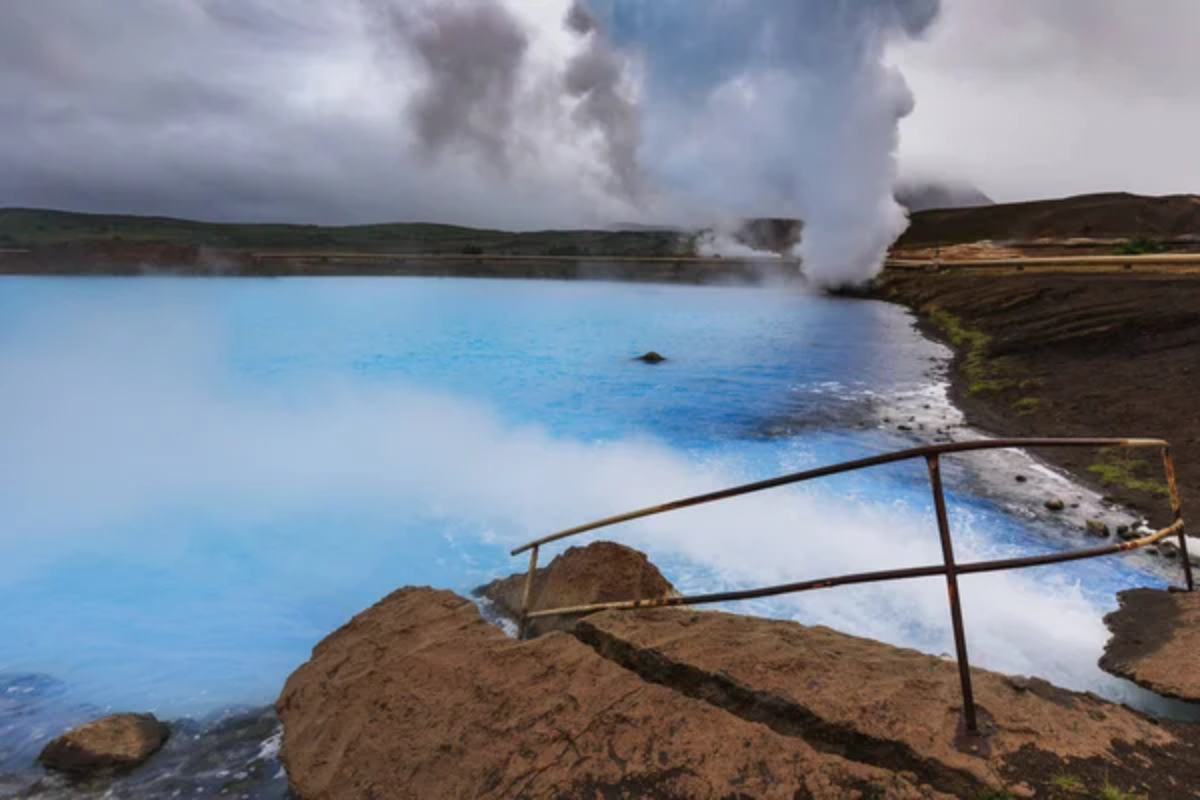
Often called “the Blue Lagoon of the North,” this less crowded thermal complex near Lake Mývatn offers a similar alkaline bathing experience at significantly lower prices. The artificial lagoon features varying temperature zones ranging from pleasantly warm to genuinely hot, all offering stunning views across the volcanic landscape of northern Iceland.
Unlike its more famous southern counterpart, Mývatn Nature Baths maintains a somewhat more relaxed atmosphere with less rigid time scheduling and fewer add-on services. The water contains a similar mineral profile that leaves skin feeling silky smooth, while the remote northeastern location means visitors can often enjoy sunset soaks with far fewer fellow bathers during shoulder seasons.
Landmannalaugar Hot Pot
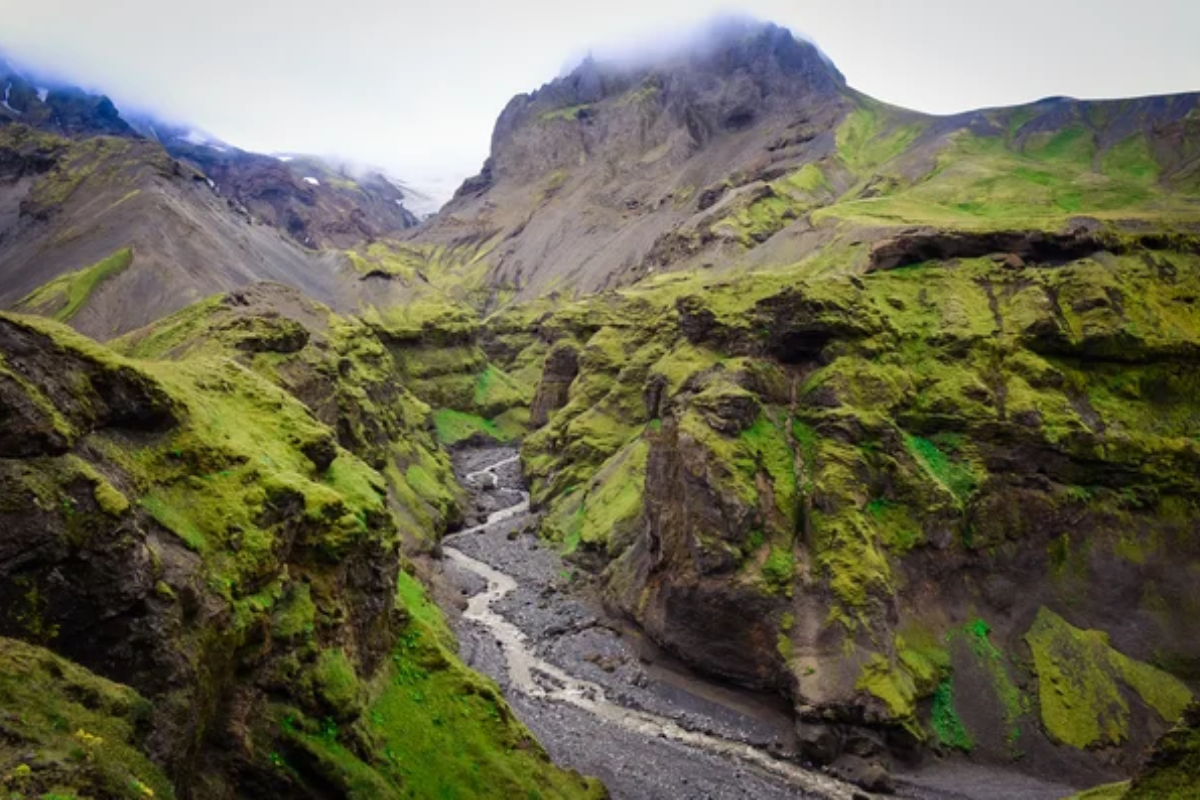
Deep in Iceland’s highland interior, this natural hot spring sits at the base of rainbow-colored rhyolite mountains where multiple hiking trails converge. The broad, shallow pool forms where hot water emerges directly beside a cold glacial river, allowing bathers to adjust their position to find their preferred temperature.
The surrounding landscape appears almost otherworldly with vivid mineral-stained mountains creating a colorful backdrop unlike anywhere else in Iceland. Reaching Landmannalaugar requires either a rugged 4×4 vehicle or taking a seasonal highland bus, but those making the journey find themselves rewarded with an iconic Icelandic bathing experience where hikers have soothed tired muscles for generations.
Secret Lagoon
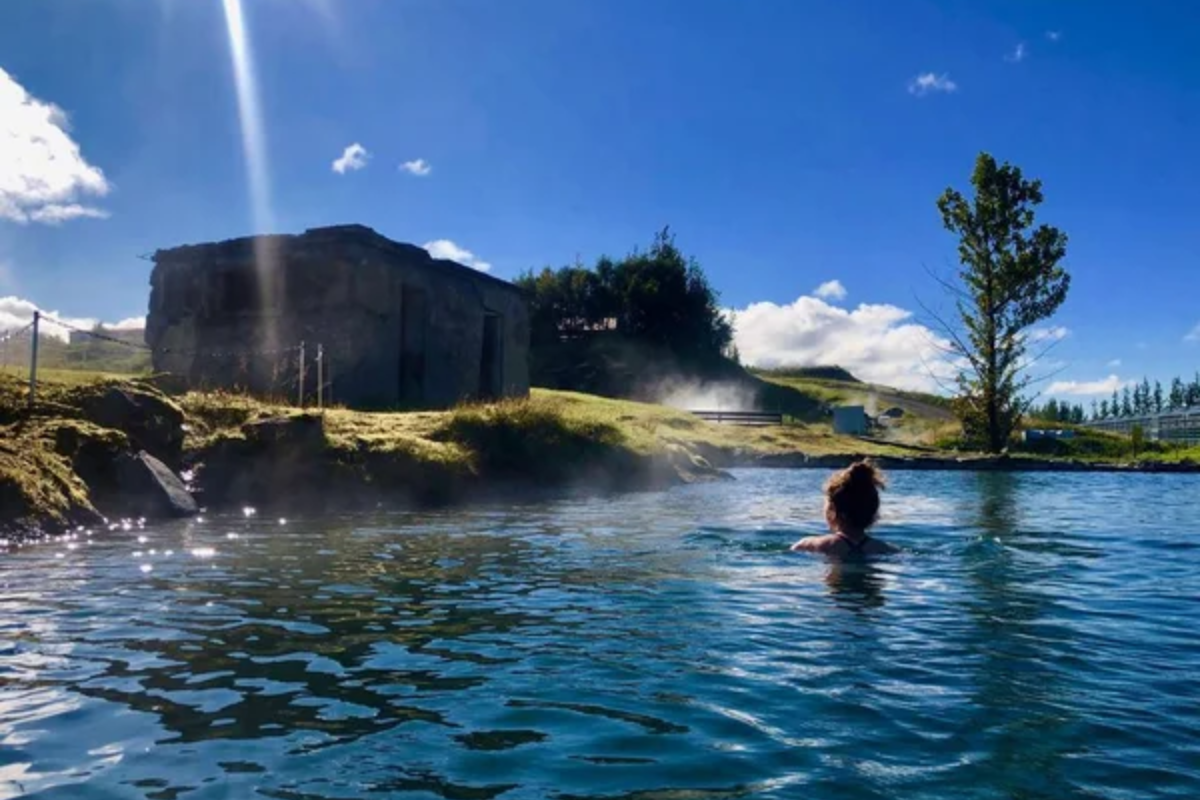
Despite its name, this historic pool in the Golden Circle region isn’t particularly secret anymore, though it maintains a wonderfully authentic atmosphere. Originally built in 1891, it claims the title of Iceland’s oldest swimming facility still in operation. The sizeable concrete-lined pool sits amid actively geothermal grounds where visitors can observe small geysers erupting at regular intervals just steps from the bathing area.
The simple changing facilities and modest entrance fees reflect the establishment’s commitment to preserving a genuine Icelandic bathing experience rather than developing it into a luxury spa. Even during busy periods, the spacious pool rarely feels crowded, and evening visits often feature northern lights displays during winter months.
Like Travel Pug’s content? Follow us on MSN.
GeoSea Baths
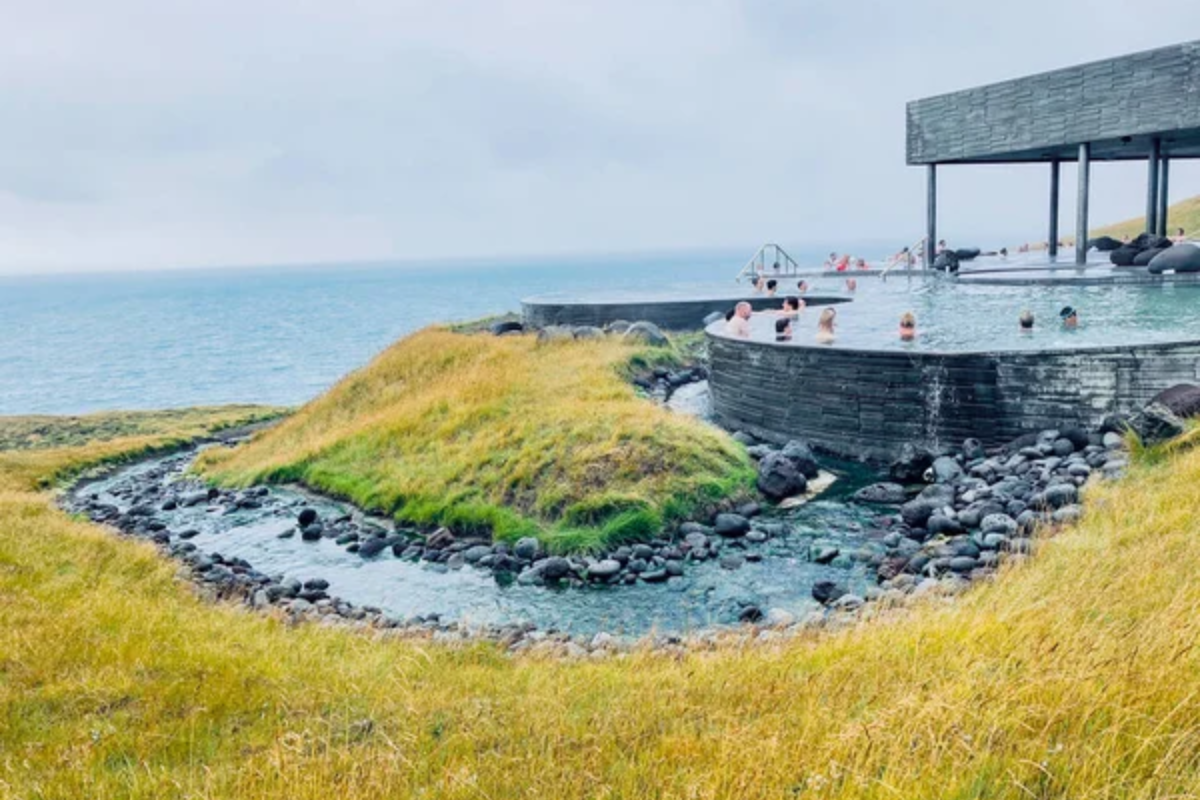
infinity-edge pools offer perhaps the country’s most dramatic bathing views. The sleek, modern facility pumps geothermally heated seawater into a series of terraced pools positioned directly above Skjálfandi Bay, creating the illusion of swimming to the Arctic horizon.
Unlike most Icelandic hot springs featuring sulfur-rich freshwater, GeoSea’s mineral content comes primarily from the ocean, giving the water a distinctive silky quality. The facility’s positioning means bathers frequently spot whales surfacing in the bay below, while winter visitors might enjoy the extraordinary experience of watching the northern lights dance overhead while immersed in steaming seawater.
Krauma
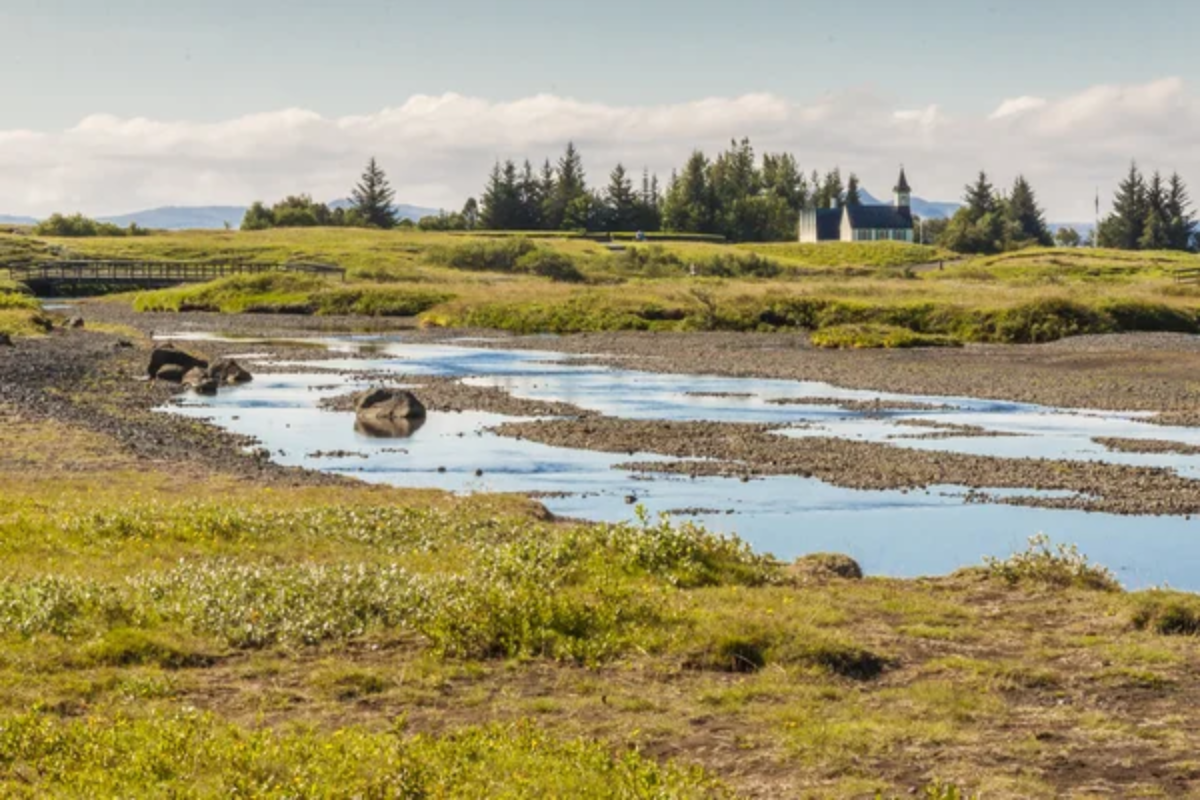
Adjacent to Europe’s most powerful hot spring, Deildartunguhver, this contemporary spa facility combines design-forward architecture with impressive environmental credentials. The complex features five distinct temperature-controlled pools utilizing water directly from the spring—which emerges at a scalding 207°F before cooling to safe bathing temperatures.
Additional features include contrasting cold plunge pools, relaxation rooms with panoramic windows, and a restaurant emphasizing local ingredients. What distinguishes Krauma from other developed hot springs is its integration with the active geothermal area, where boardwalks allow visitors to safely observe the raw power of Deildartunguhver itself—a violently boiling spring that supplies hot water to towns nearly 40 miles away.
Seljavallalaug
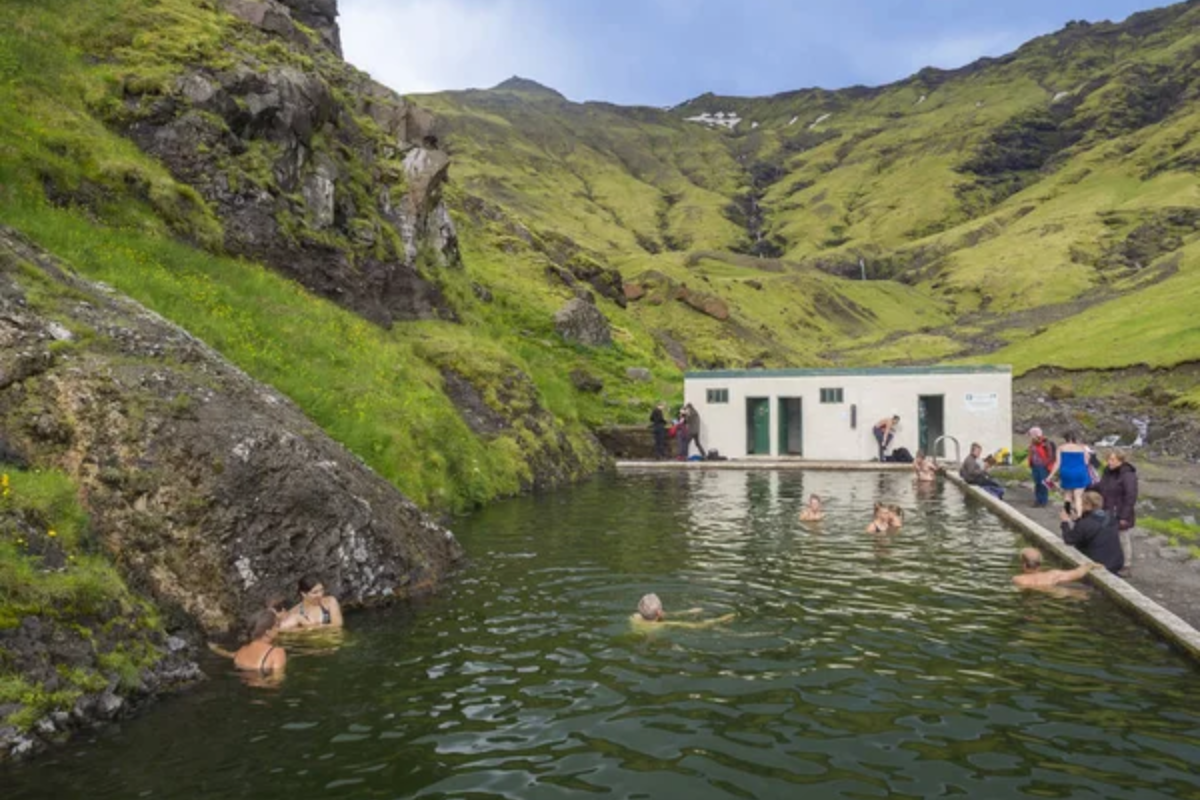
This historic mountain-flanked swimming pool built in 1923 ranks among Iceland’s most photogenic bathing spots, tucked into a narrow valley beneath the infamous Eyjafjallajökull volcano. Though technically a human-made concrete pool, it’s fed by natural hot springs and sits entirely undeveloped except for a small changing hut that hasn’t seen renovations in decades.
Reaching Seljavallalaug requires a 20-minute hike through beautiful scenery, keeping visitor numbers manageable despite its Instagram fame. The water temperature varies seasonally and remains cooler than many Icelandic hot springs—generally around 86°F—but the extraordinary setting compensates for any thermal shortcomings, with steep mountains rising on three sides and a small waterfall visible from the pool.
Like Travel Pug’s content? Follow us on MSN.
Sky Lagoon
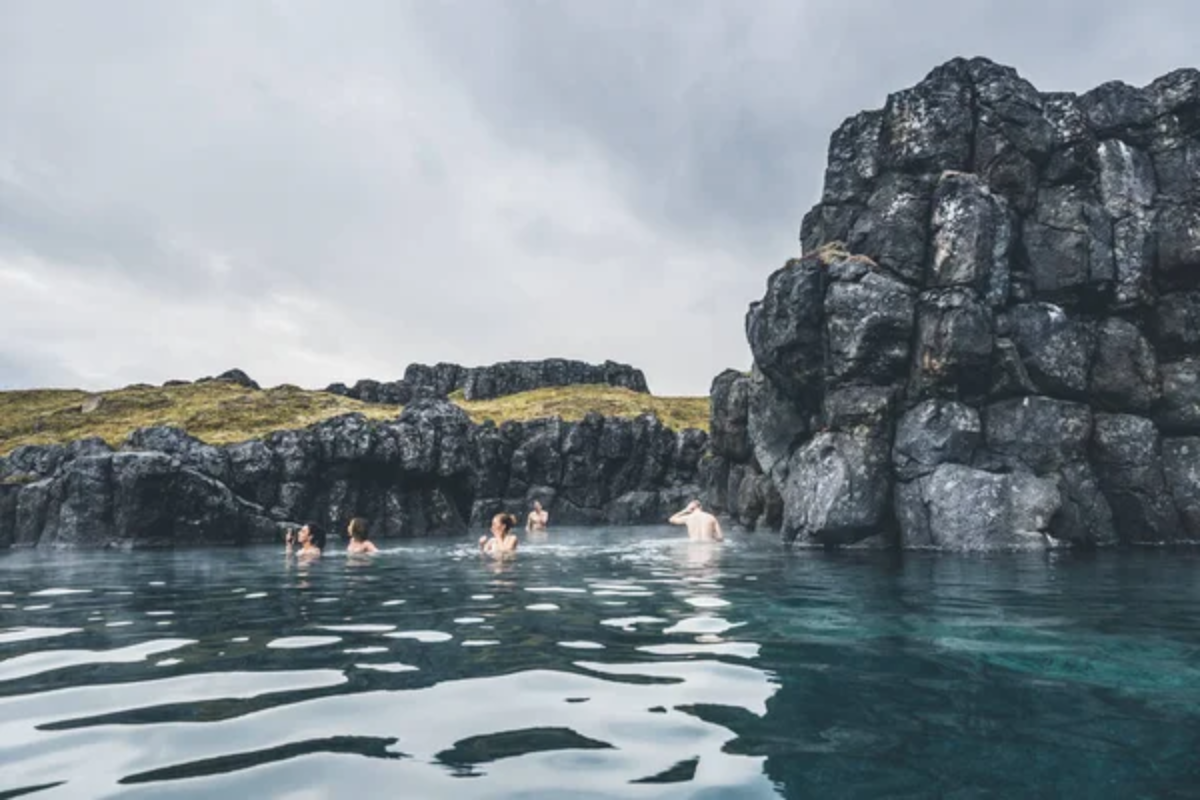
Reykjavík’s newest thermal attraction reimagines traditional Icelandic bathing culture through a luxury lens. Located just minutes from downtown, the complex features a 246-foot infinity edge facing directly into the North Atlantic Ocean, creating the illusion of swimming to the horizon. Unlike other developed spas, Sky Lagoon emphasizes Icelandic heritage through turf-house architecture and a seven-step ritual based on traditional bathing practices.
The facility’s design cleverly hides changing areas and infrastructure behind what appears to be a traditional farm structure, maintaining immersive ocean views throughout the bathing experience. Though relatively expensive, the combination of convenience, design excellence, and unparalleled views has quickly established Sky Lagoon as a worthy alternative to the Blue Lagoon.
Hrunalaug
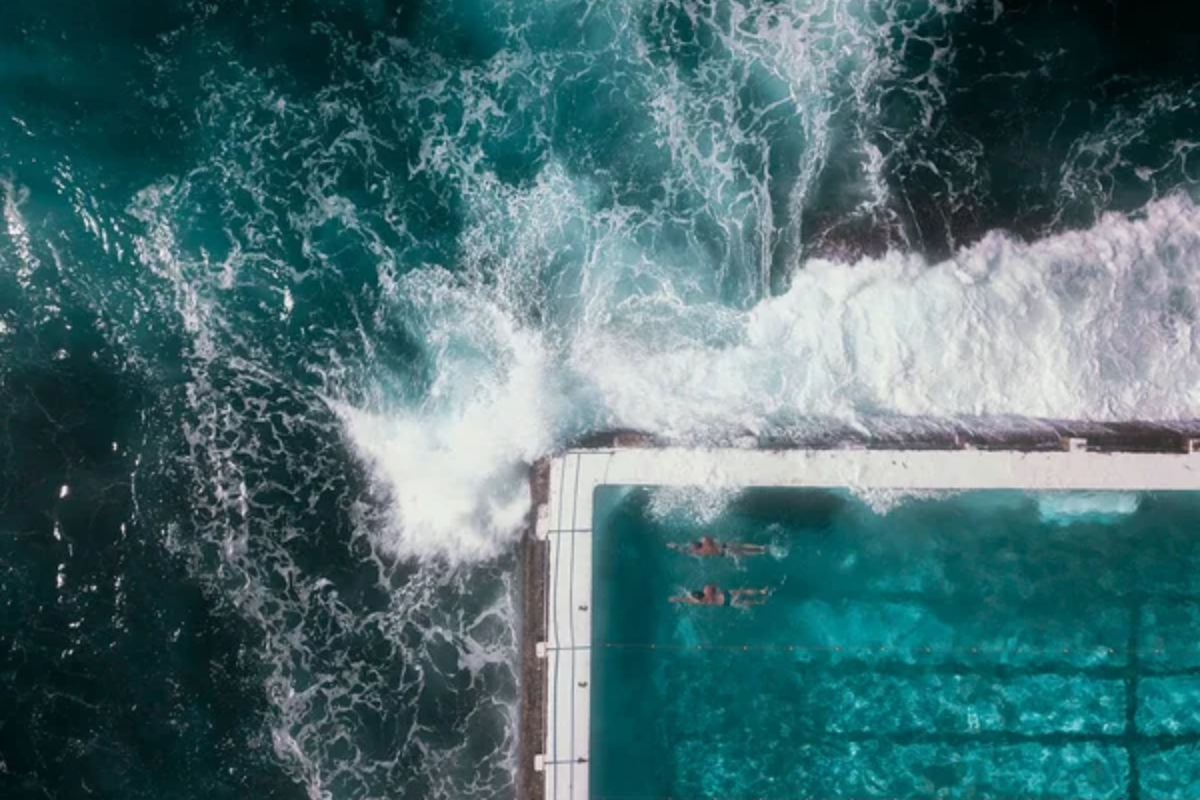
This intimate natural spring in South Iceland exemplifies the country’s simpler hot pots that remain under local family management. Three small rock-lined pools of varying temperatures sit beside a tiny turf-roofed changing hut, accommodating perhaps a dozen bathers maximum. The landowners maintain this charming spot through an honor-system donation box, using funds to repair occasional damage from increasing visitor numbers.
The smallest pool comfortably fits just two people, creating one of Iceland’s most romantic bathing options when visited during off-hours. The surrounding pastureland adds to the authentic rural Icelandic atmosphere, with horses and sheep often grazing within view of the steaming pools.
Vök Baths
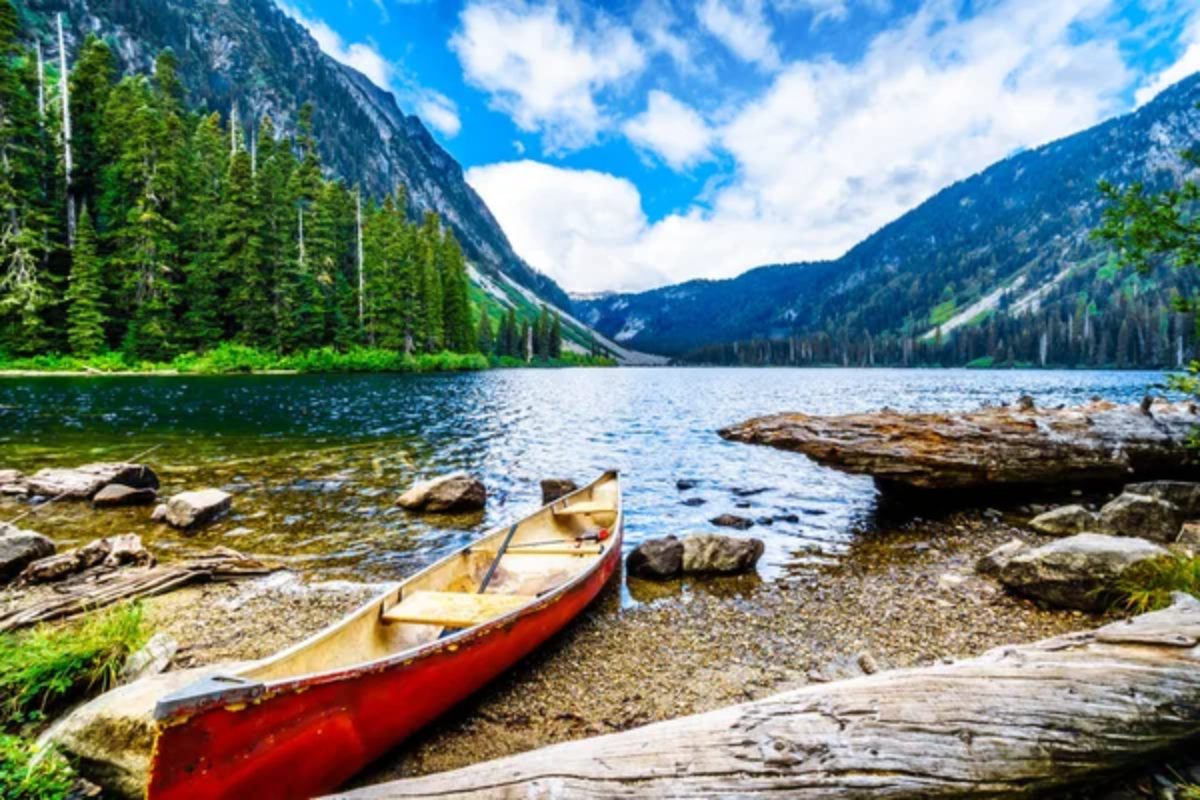
Eastern Iceland’s newest spa facility offers a unique floating experience on Lake Urriðavatn, where geothermally heated freshwater rises through the lakebed, creating ice-free patches during winter—the “vök” that give the baths their name. The award-winning architecture features geometric floating platforms containing hot pools that appear to hover directly on the lake’s surface.
The complex emphasizes sustainability with Icelandic timber construction and innovative heat recovery systems. Unlike many developed hot springs utilizing mineral-rich or sulfurous water, Vök’s pure freshwater is clean enough to drink—which the on-site tea bar demonstrates by infusing it with Icelandic herbs. The facility’s remote eastern location ensures smaller crowds despite its growing reputation for design excellence.
Like Travel Pug’s content? Follow us on MSN.
Fosslaug
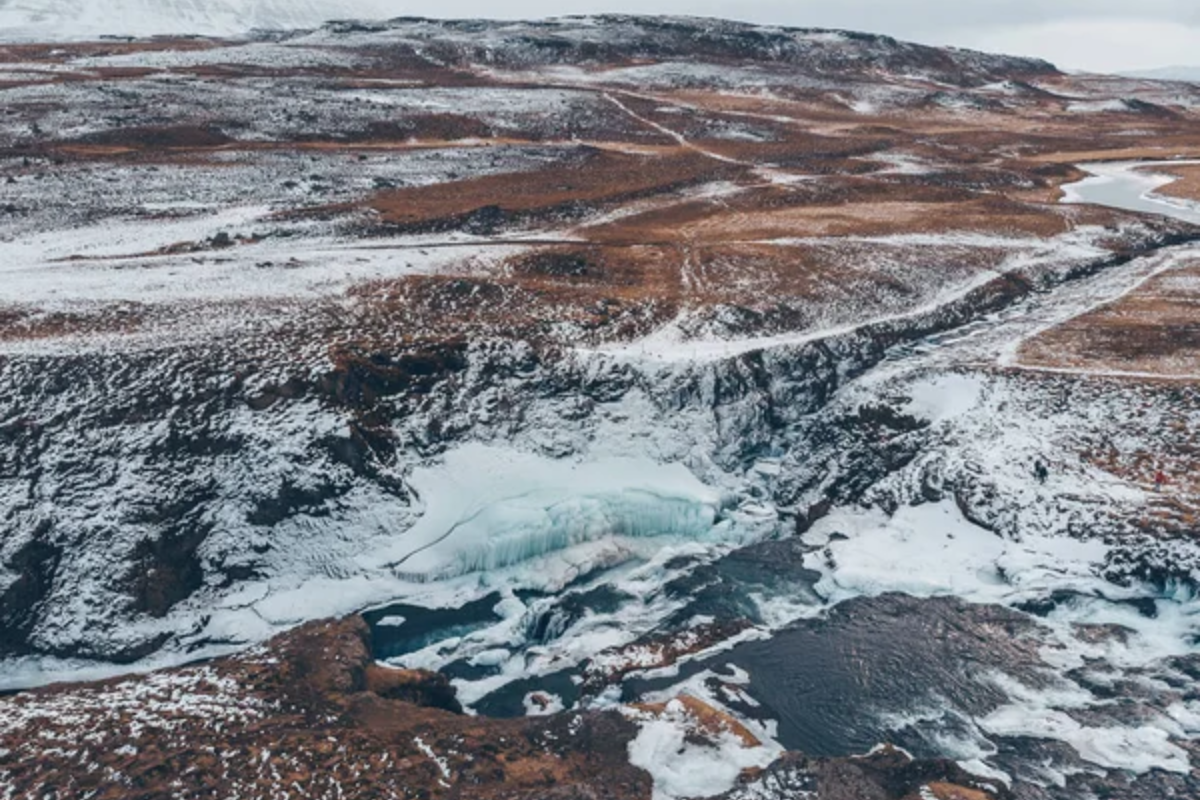
Adjacent to the impressive Reykjafoss waterfall, this small natural hot spring represents the perfect balance between accessibility and an unspoiled atmosphere. The naturally formed stone pool sits directly beside the glacial Svartá River, allowing bathers to adjust their temperature experience by moving closer to or further from where the cold and hot waters mix.
Reaching Fosslaug requires just a 15-minute walk from the nearest parking area, followed by a somewhat precarious rock hop across the river—enough challenge to prevent overcrowding but manageable for most visitors. The pool comfortably fits about six people, with the constant thundering of the adjacent waterfall providing nature’s soundtrack to the bathing experience.
Laugarvatn Fontana
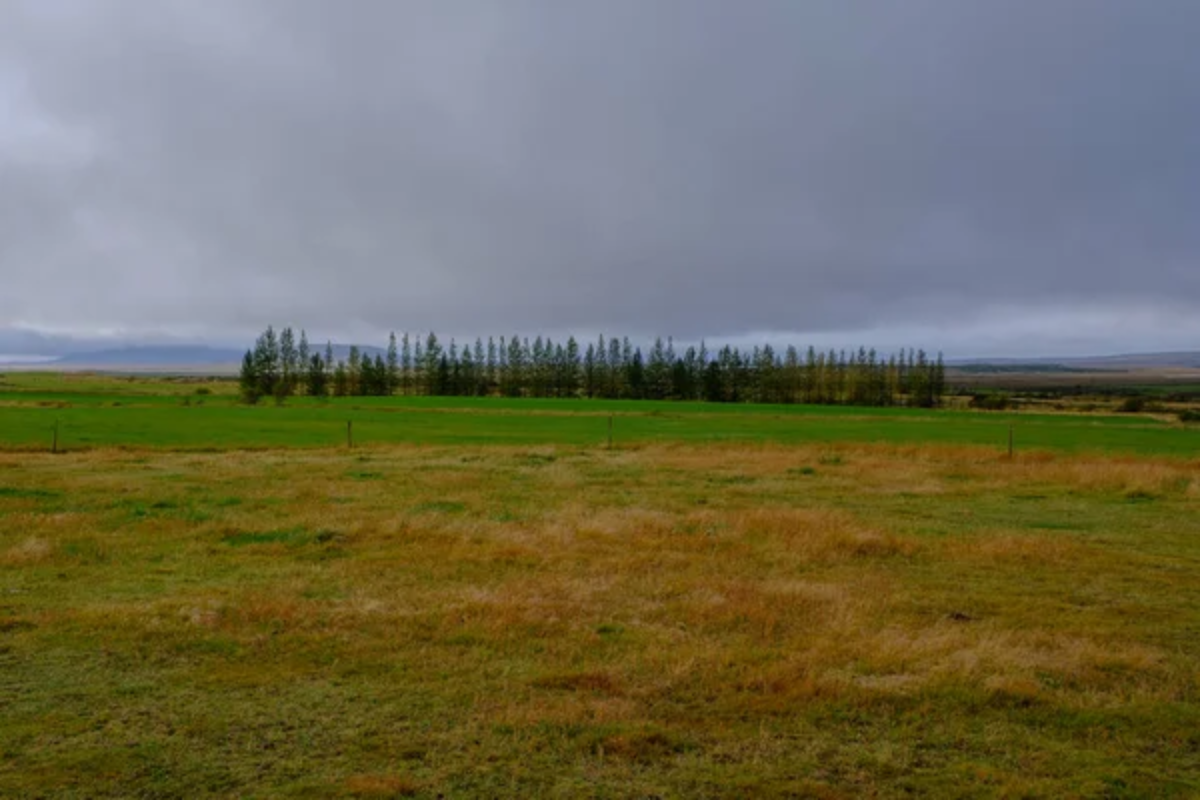
Built directly atop natural sand-bottom hot springs, this facility offers a more authentic alternative to Iceland’s concrete-lined thermal pools. The complex features graduated thermal pools of varying temperatures, traditional steam rooms built over active geothermal vents, and lake access for brave cold-water plunges.
What truly distinguishes Fontana is its connection to traditional Icelandic practices—including twice-daily demonstrations of geothermal bread baking, where rye bread dough is buried in the hot black sand for 24 hours before emerging perfectly cooked. The lakeside location offers beautiful views across Laugarvatn, particularly attractive during sunset hours when steam rises dramatically from the water’s surface.
Gudrunarlaug
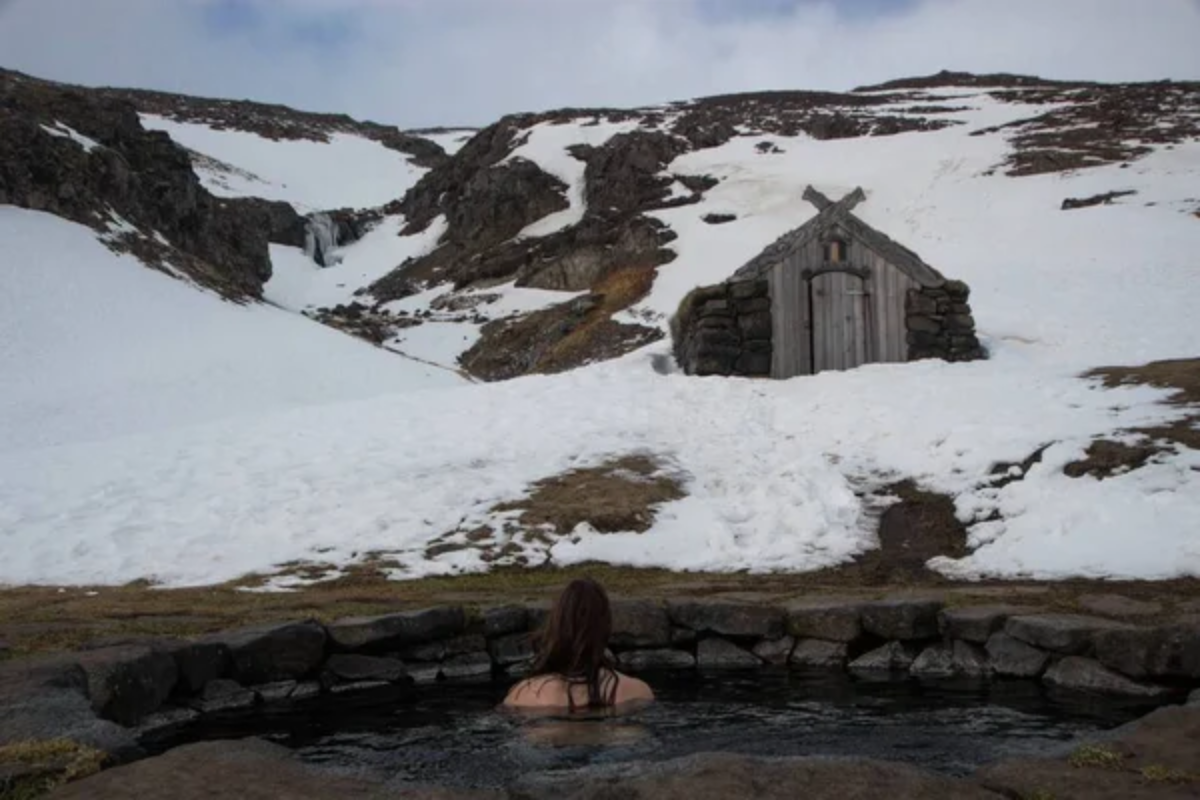
Named for a character in the Icelandic Sagas, this reconstructed medieval hot pot offers a glimpse into Viking-era bathing culture. The original pool appears in historical texts from the 13th century but was destroyed by a landslide in the 19th century before being carefully rebuilt in 2009 following archaeological evidence.
The small stone-lined pool sits in a remote corner of the Westfjords region, with a traditional turf-roofed changing hut completing the historical atmosphere. Unlike Iceland’s more developed hot springs, Gudrunarlaug remains completely free to use, operating on respectful shared access principles. The surrounding landscape of rolling green hills dotted with sheep creates a timeless setting that connects modern visitors with centuries of Icelandic bathing tradition.
Like Travel Pug’s content? Follow us on MSN.
Krossneslaug

Few Icelandic swimming experiences can match the dramatic isolation of this municipal pool perched at the very edge of the Arctic Ocean in the remote Westfjords. Though technically a constructed facility, the pool’s extraordinary location—where mountains meet the sea at the end of a rough gravel road—creates an unforgettable natural experience.
The geothermally heated water provides a perfect 86°F contrast to the frigid ocean just steps away, with nothing but an open ocean between Bathers and Greenland. The simple changing facilities and honor-system payment box reflect the area’s minimal population, while the drive to reach this remote spot ensures visitors earn their soak through adventurous effort.
A Geothermal Paradise
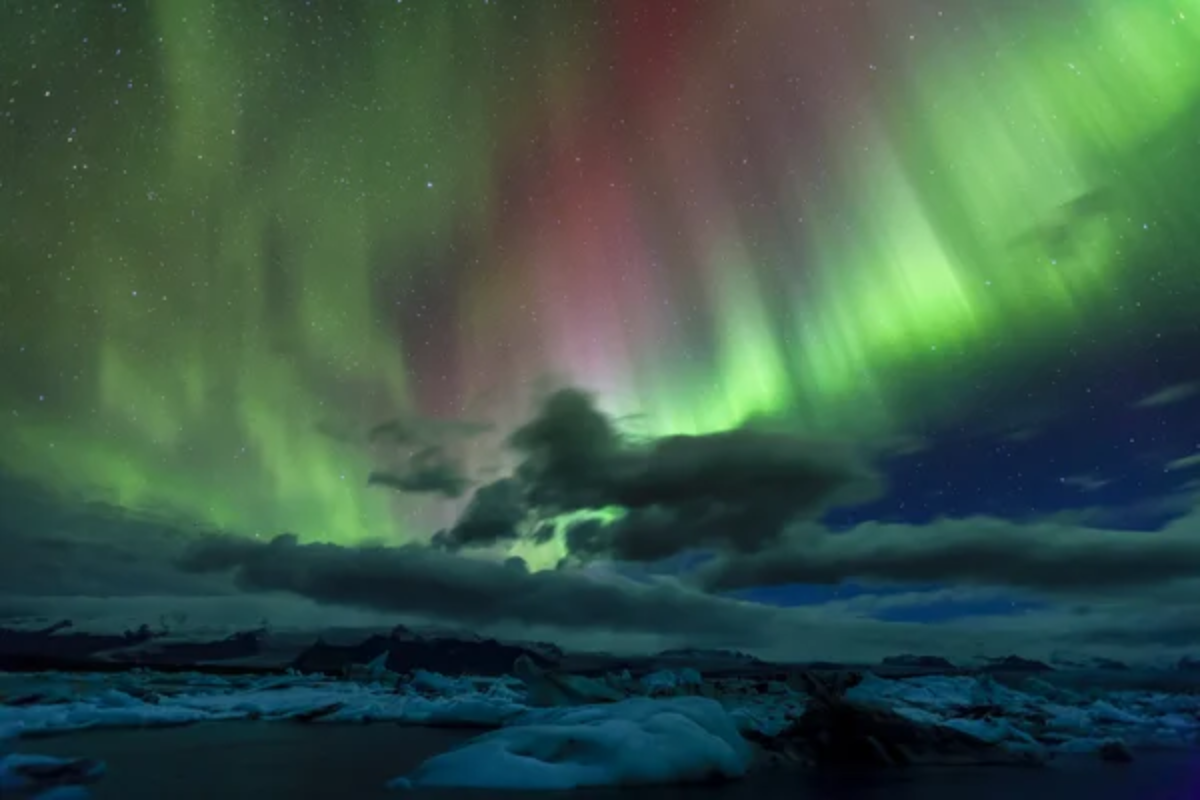
Iceland’s extraordinary concentration of thermal waters offers experiences impossible elsewhere in Europe—from sophisticated contemporary spas to completely wild hot springs where sheep might be your only companions. What makes the country a true hot spring paradise isn’t merely the number of geothermal features but their remarkable diversity, allowing visitors to choose experiences matching their comfort levels, budgets, and desired levels of adventure.
Whether seeking luxury amenities with poolside service or wilderness immersion in steaming rivers miles from civilization, Iceland rewards hot spring enthusiasts with thermal wonders that showcase the remarkable meeting point of fire, water, and the human desire to soak away troubles in naturally heated waters.
More from Travel Pug

- 20 Towns Built for One Purpose That Were Later Abandoned
- 15 Hidden Spots in Disney World’s Magic Kingdom Most Visitors Miss
- 20 Once-Popular Beach Towns That Are Now Ghostly Empty
- 15 Canyons in the U.S. That Are Just as Stunning as the Grand Canyon
- 10 Under-the-Radar Mountain Towns That Are Both Affordable and Beautiful
Like Travel Pug’s content? Follow us on MSN.
